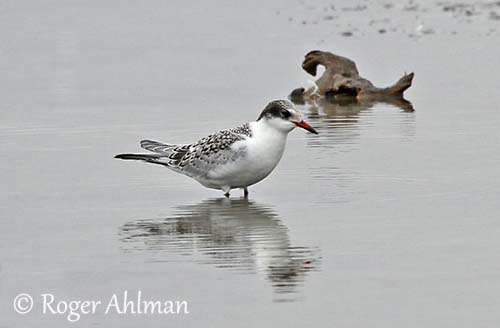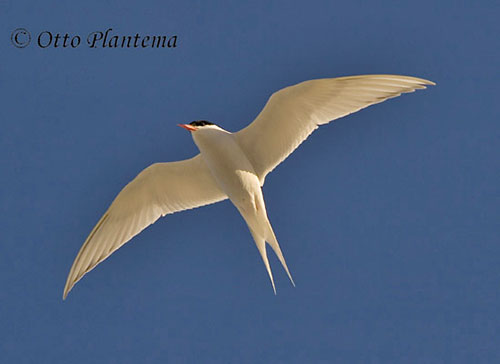
Fr: Sterne hirundinacée
All: Falklandseeschwalbe
Esp: Charrán Suramericano
Ita: Sterna del Sudamerica
Nd: Zuid-Amerikaanse Visdief
Sd: Sydamerikansk tärna
Port: Trinta-réis-de-bico-vermelho
Photographers:
Roger Ahlman
Pbase Galleries Peru and Ecuador
John Anderson
John Anderson Photo Galleries
Didier Buysse
Vision d’Oiseaux
Eduardo Andrés Jordan
MIS AVES – AVES DE ARGENTINA
Otto Plantema
Trips around the world
Text by Nicole Bouglouan
Sources:
HANDBOOK OF THE BIRDS OF THE WORLD Vol 3 by Josep del Hoyo-Andrew Elliott-Jordi Sargatal - Lynx Edicions - ISBN : 8487334202
BirdLife International (BirdLife International)
SORA Searchable Ornithological Research Archive (Blair O. Wolf)
South American Tern
Sterna hirundinacea
Charadriiformes Order – Laridae Family
INTRODUCTION:
The South American Tern is a coastal seabird of the South American coasts and Falkland Islands. They breed in huge colonies of thousands of pairs with up to three nest / square metre on rocky and sandy beaches, cliff tops or islets. This elegant tern has swallow-like forked tail, conspicuous in flight.

DESCRIPTION OF THE BIRD:
Biometrics:
Length: 41-43 cm
Wingspan: 84-86 cm
Weight: 172-195 g
The adult in breeding plumage has typical “sterna” appearance with black cap including forehead, crow and nape, and pale grey upperparts.
The underparts are pale grey too, creating a contrast with white cheeks and undertail-coverts. The primaries show faint blackish tips, sometimes visible in flight.
The eyes are dark brown. Bill, legs and webbed feet are red.
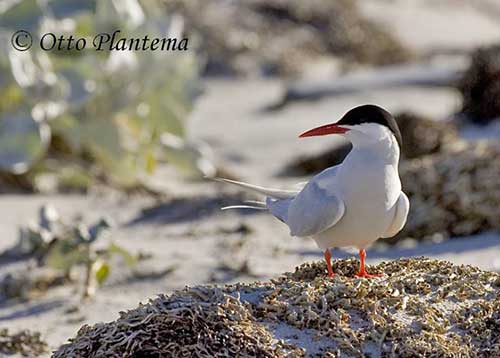
The non-breeding adult has white forehead and forecrown.
Both sexes are similar.
The juvenile has whitish crown mottled blackish-brown. The upperparts are barred blackish. The primaries are dark grey. The rectrices are whitish with dark outer webs. The bill is black. Legs and feet are dirty yellow.
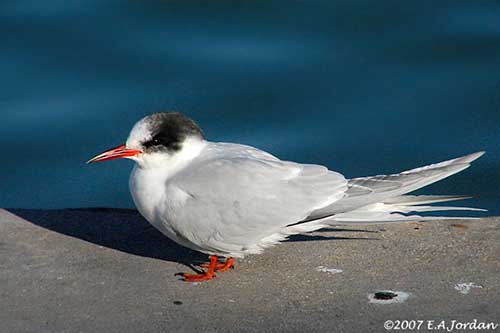
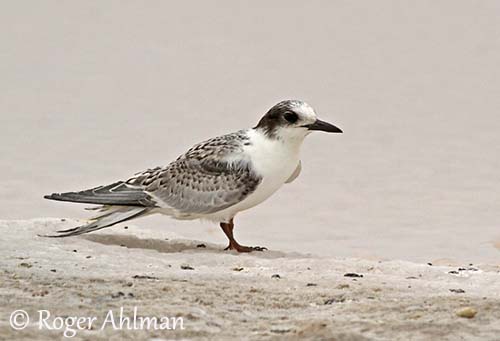
RANGE:
The South American Tern occurs on the coasts of S Peru and CE Brazil, S to Tierra del Fuego and Falkland Islands. During the austral winter, it extends N to Ecuador and Bahia (CE Brazil).
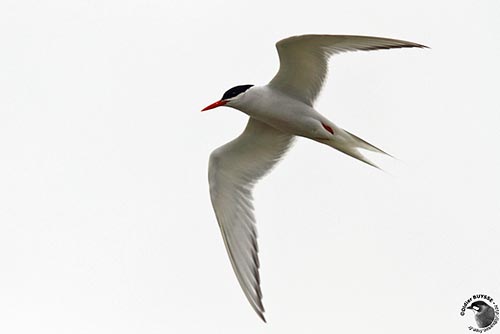
HABITAT:
The South American Tern is a coastal seabird, breeding on sandy or rocky beaches, cliff tops and small islands. The non-breeding birds are found on beaches, in estuaries and harbours.
In Falkland Islands, this species is also present around the coasts. However, it breeds on remote coastal plains to avoid human disturbance.
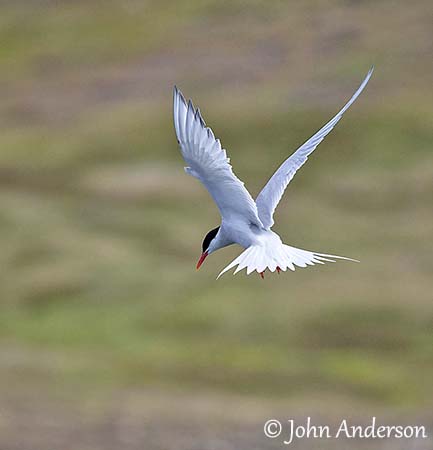
CALLS AND SONGS: SOUNDS BY XENO-CANTO
The South American Tern utters harsh calls. They are noisy during the breeding season at colonies. Vocalizations are used in territory defence, courtship behaviour, maintaining the pair-bond and contact with chicks.
During aggressive encounters, the calls are short and rapid “keek, keek, keek” becoming shorter during high-intensity encounters “kek k k k k k”.
During courtship, the male utters softer “kearr, kearr, keari” and a repetitive “kuk kuk kuk” during the copulation.
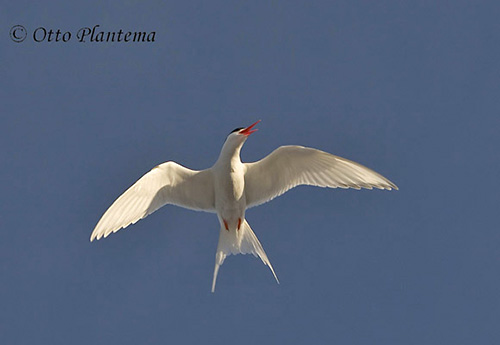
BEHAVIOUR IN THE WILD:
The South American Tern feeds mainly on fish and crustaceans, but it probably takes insects too. Like other terns, it feeds by plunge-diving.
This coastal tern forages in tidal creeks and estuaries, but also in ocean waters close inshore. The bird flies at a height of 3-15 metres above the water, searching for preys below the surface. Once the prey is detected, it hovers over it before to plunge directly into the water. The tern is usually completely submerged. But if the prey is near the surface, only bill and head are immersed.
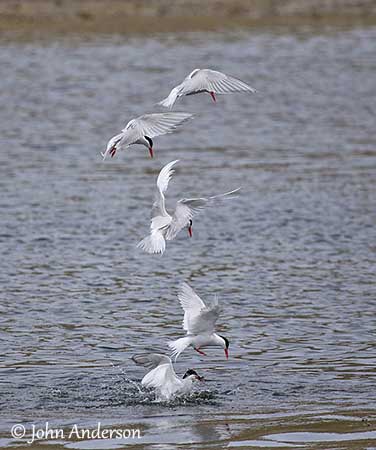
The South American Tern may forage sometimes in association with other marine animals such as porpoises (Phocoena) and predatory fish. They drive the schools of small fish and lead them near the surface, making them easy to catch.
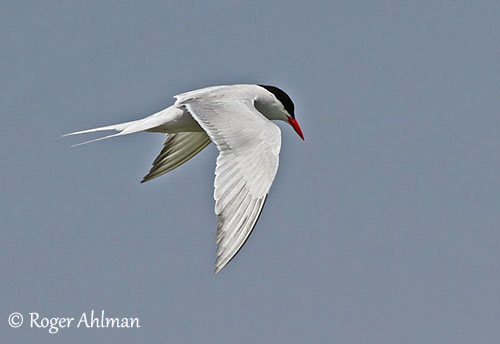
During the breeding season, the South American Tern is very territorial. The breeding birds often attack humans approaching the nest-site. Unfortunately, this type of disturbance may lead the terns to abandon their nests.
They breed in huge colonies of several thousands of pairs, with up to three nests per square metre!
They perform displays and courtship feeding during several days before the laying. Courtship involves several ritualized displays on the ground or in the air. Usually, the male offers a fish to the female which may either to swallow it immediately or keep it in the bill during “high-flights” and “fish-flights” displays. Both sexes alternate wingbeats and gliding on rigid wings.
Before the copulation, both mates may dance around each other with drooped wings, while calling softly. The copulation follows these displays.

Usually, the South American Tern moves N after breeding. During the austral winter, it ranges N to S Ecuador on Pacific coast, and to CE Brazil on Atlantic coast. A few birds may remain all year round in Tierra del Fuego.
The Falkland’s birds also migrate N up to the S American coasts between April and September.
They perform swift and graceful flight. The “high-flights” display is spectacular.
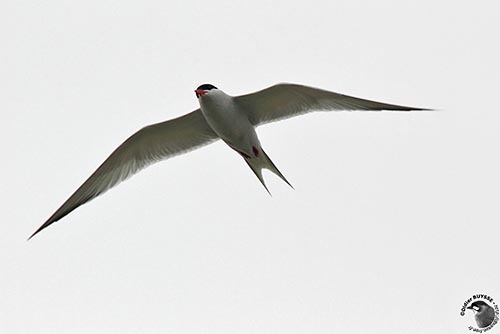
REPRODUCTION OF THIS SPECIES:
The laying occurs in November and December in Falkland Islands, in April/June in Brazil, early November in N Argentina and Uruguay, and early December in S Argentina.
The South American Tern forms large colonies on coastal beaches and cliffs. The nest is a scrape in sand or gravel. It may be surrounded by small shells and it is sometimes lined with vegetation.
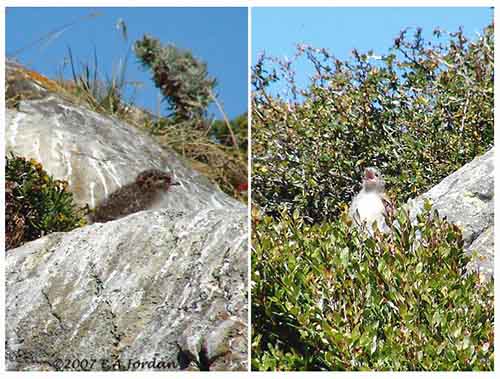
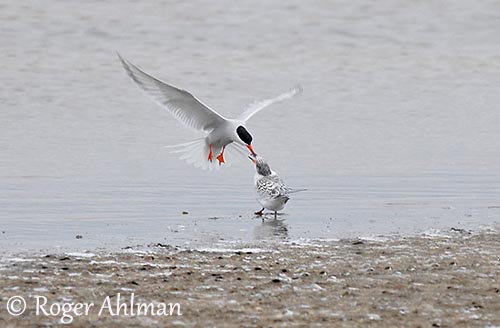
The female lays 2-3 whitish eggs with dark grey and brown markings. Both adults incubate during 21-23 days. The chicks have variable colour, from olive-buff to grey with dark mottling, black throat and greyish-white underparts. They fledge 27 days after hatching.
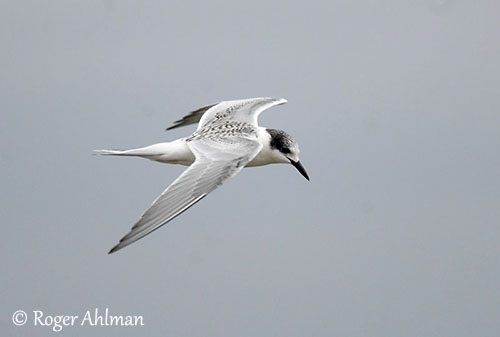
PROTECTION/ THREATS/ STATUS:
The South American Tern’s population is declining, due to disturbance at nesting sites. The increase of tourism and aquatic sports involved decline of Chilean and Argentinean populations. Egg-collection in Brazil is also a problem at colonies of Espirito Santo.
The Falkland’s terns are threatened by commercial fishing and the population is estimated at about 10,000 breeding pairs. The world population is unknown.
But in spite of declines, The South American Tern is currently evaluated as Least Concern.
